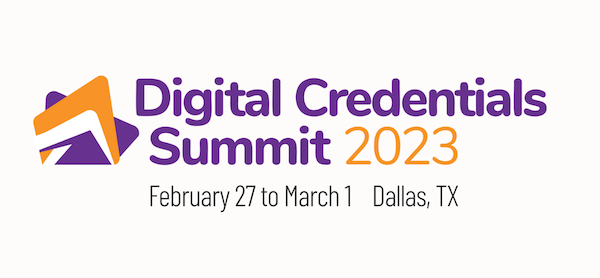Published on
Lessons Learned: Implementing Digital Badging Strategies

With an increasing amount of people looking to change careers or find the skills to keep them relevant in the workforce, there’s growing interest in credentials and digital badging. Learners want to be able to gain skills employers can immediately verify without interrupting their careers. This means more institutions are looking to get onboard and implement credentials and badges—but they don’t have to start from scratch. In this interview, Sherri Braxton discusses the importance of developing digital badges, how to overcome common obstacles and the lessons she learned while implementing these strategies.
The EvoLLLution (Evo): Why is it so important for today’s higher ed institutions to focus on developing digital badging and credentialing strategies?
Sherri Braxton (SB): As a result of the Great Resignation, we’ve seen a lot of people reflecting on their current employment status and changing careers. Even prior to the pandemic, the student demographic in higher education was changing. More adults are returning to school to upskill or reskill.
Digital badging gives higher ed a few options to address these needs: more flexible, short-term credentials and opportunities to embed them within existing degree programs. This way, students can earn the credentials they need and share them with employers once they achieve them.
Evo: Is it true that employers and learners often don’t understand the difference between traditional credentials and badging? If so, how do you overcome that communication gap in trying to expose new audiences to alternative and new kinds of credentialing?
SB: Yes, it’s true. About six years ago, when we started to look at digital badging at the System of Maryland, it was because employers were telling us students couldn’t articulate where they’d obtained the skills needed in the workforce while attending our institutions. So, we worked with employers directly to identify the career-ready skills students needed to demonstrate across different work settings.
I’m now at Bowdoin College, and what I experienced at UMBC is what I’ve experienced here: communicating the what, why and how—educating the community on the differences between traditional credentials and badging and other new types of credentials—takes time. Increasing awareness and providing education on the value of badges is key. Illustrating how a student’s skills can be transferred into other environments, not only to students but also employers, is an essential aspect of this communication. So, we must continue educating others about the value of badges and how they help students tell their stories while providing employers with a deeper look into the skills they acquired beyond the letter grades in the transcript.
Evo: What does it take to roll out an innovative credentialing practice across an institution, and how do you foster internal buy-in when you’re proposing these kinds of approaches?
SB: I’m doing a workshop at the 1EdTech Digital Credentials Summit with Amber O’Casey from Alamo Colleges District, presenting the instructional design perspective on digital badging, and we’ll cover a lot of this process during that session. My first piece of advice is to start with a pilot. Pick an area that already has clear and transparently aligned objectives and assessments, so you demonstrate and show the concept in practice. Then engage stakeholders (i.e., faculty and students) who can share stories of experiences and their value. Faculty want to hear from faculty, and students want to hear from students. Getting them involved is key.
The pilots I typically select are “low-hanging fruit” programs, where students are clearly gaining relevant, measurable skills that aren’t currently being documented and lend themselves easily to a digital badging program. With these examples, I can demonstrate to others the value of creating new types of credentials. While I’ve learned that it is often easier to start in co-curricular spaces than in curricular ones, I’ve also found that it’s not as much work to integrate badges into courses as faculty might think, if they already have a curriculum map and effective direct assessment strategies aligned to desired outcomes.
Evo: What are some of the most common challenges that institutional leaders will face when it comes to implementing a badging process?
SB: The number one challenge is faculty buy-in while recognizing that faculty already have a lot on their plates. Showing faculty the value of badges and demonstrating that these new credentials are merely different ways to both represent and communicate work they’re already doing is important. I also urge people to have a senior leadership champion on campus; this is critical to any innovation project’s success. There is also a lot of bottom-up work to be done, and you need support to succeed. It’s also important to identify those key stakeholders to participate in pilot efforts.
And as you start to institutionalize the program, make sure you involve representatives from across the institution—from the registrar to the career center and everyone in between. Don’t forget to include stakeholders who impact areas where students are learning outside the classroom, like student affairs, on-campus employment, and other co-curricular spaces. These are key people who need to be part of any type of program you’re rolling out.
Evo: How do you ensure you’re creating the kind of consistency that creates a common understanding of these offerings across the market?
SB: I developed a digital badging taxonomy this year, and it was born from the work I did at the University of Maryland, Baltimore County, in a program called the Greater Washington Partnership. As part of this work, higher ed institutions worked with employers to define desired learning outcomes and aligned those outcomes with their academic offerings. We used Bloom’s Taxonomy as the framework to ensure consistency in this mapping. This work highlighted the need for this consistency we’re discussing. It’s important to make sure you can use some consistent measure or taxonomy to describe or define the levels of achievement your badges are representing. So, my digital badge taxonomy is based on two things: Bloom’s Taxonomy and something called Dreyfus’s skill development model, which really looks at competency-based education and levels of achievement. Employers speak the language of knowledge, skills and abilities and want students to be able to demonstrate them. My taxonomy connects employer language to frameworks recognized by the academy to define four distinct categories or levels of badges. The first level is engagement, where you’re participating in an event that may not necessarily be assessed, like a conference. The other three levels—awareness, proficiency and mastery—represent high-order competency and more complex levels of cognitive learning as you climb the pyramid that require some type of assessment or demonstration of skill associated with each of them.
Evo: How do you see digital credentialing models and microcredentialing models more broadly playing a role in our industry over the next five or so years?
SB: We’re going to see many starts and stops simply because many models and programs are currently in their pilot stages or infancy. In the end, we’re all lifelong learners, and we want the ability to go in and out of educational settings as needed. More and more, learners want these experiences to be personalized. Digital credentials provide the opportunity to achieve this in more flexible, affordable ways.
One of the most important aspects of all this work to me is the equity piece. Digital badges and microcredentials have the potential to impact access and equity in education more broadly by providing more short-duration learning opportunities that are less expensive than a four-year degree. I look forward to seeing how institutions not currently in this space get involved. I’ll be at the Digital Credential Summit to help attendees understand the various perspectives on this and how they can get their institutions involved in credentialing to help grow this ecosystem of learning opportunities.
Evo: Is there anything you’d like to add about the proliferation of digital credentials in the space?
SB: For those thinking about getting into it, attend some conferences, read some literature, talk to your friends and peers at institutions doing this work. Those of us who’ve been in this work for the last seven years have learned many lessons. Save yourself from making the mistakes we’ve made and build on the best practices already out there and continuing to develop.
This interview was edited for length and clarity.
Sherri will be presenting on this topic at the 1EdTech’s Digital Credential Summit in early march. To learn more, click here.

Author Perspective: Administrator



